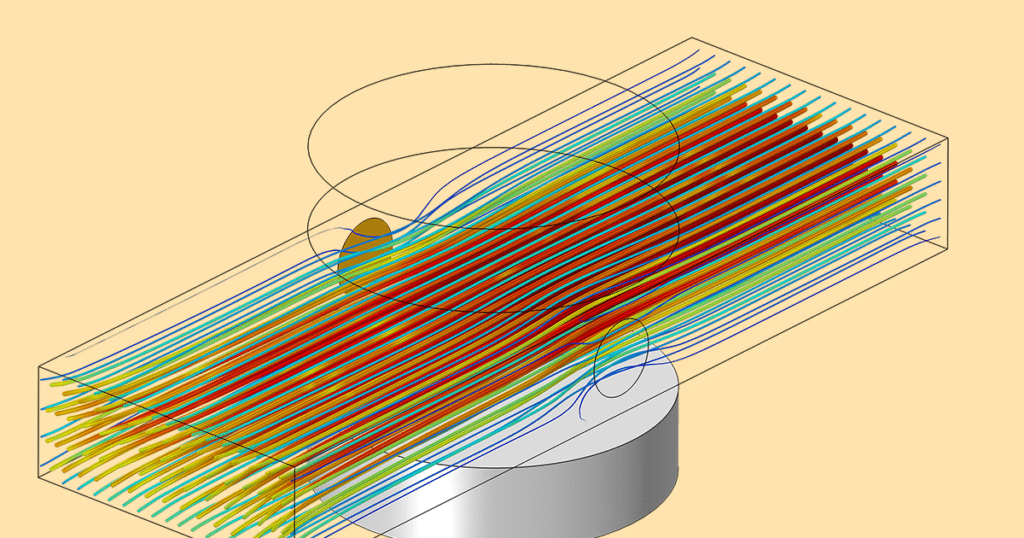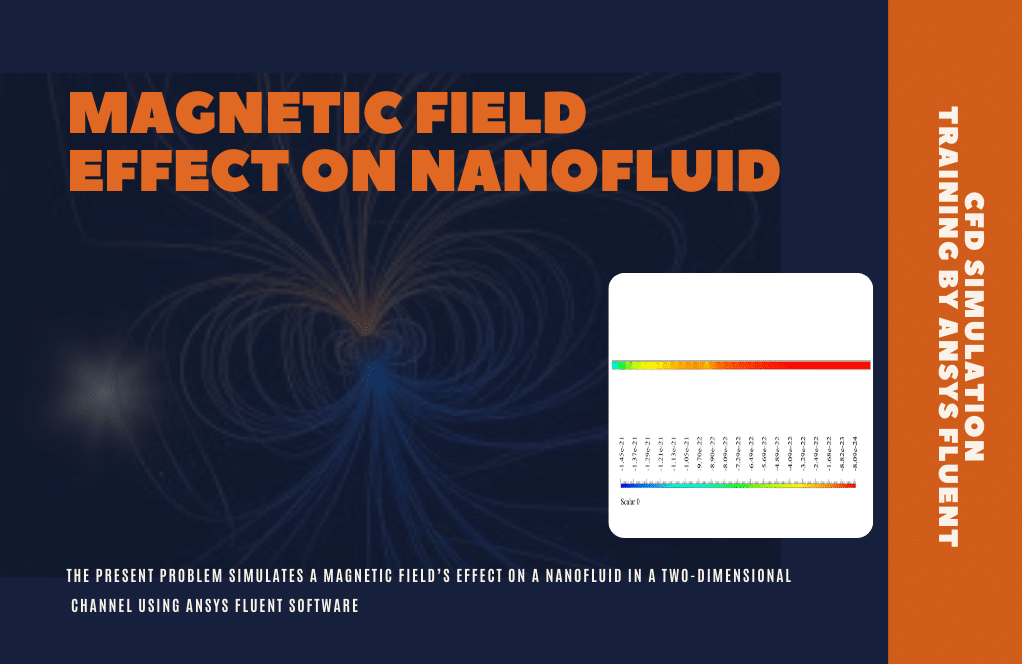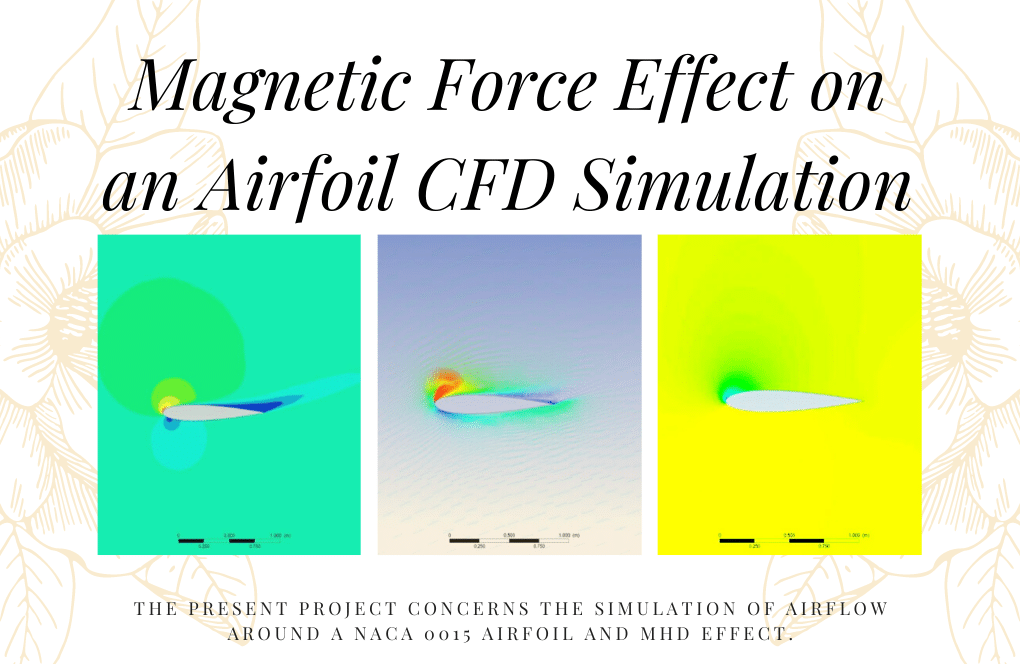CFD Project Outsourcing
Outsource your CFD project to the MR CFD simulation engineering team. Our experts are ready to carry out every CFD project in all related engineering fields. Our services include industrial and academic purposes, considering the ANSYS Fluent software's wide range of CFD simulations. By outsourcing your project, you can benefit from MR CFD's primary services, including CFD Consultant, CFD Training, and CFD Simulation.
The project freelancing procedure is as follows:
An official contract will be set based on your project description and details.
As we start your project, you will have access to our Portal to track its progress.
You will receive the project's resource files after you confirm the final report.
Finally, you will receive a comprehensive training video and technical support.
What are Electrohydrodynamics (EHD) and Magnetohydrodynamics (MHD)?
EHD and MHD are fluid dynamics branches that study how electric or magnetic fields affect fluid flow. Brief explanations:
EHD
Electrohydrodynamics (EHD), also known as electro-fluid-dynamics (EFD) or electrokinetics, is the study of the dynamics of electrically conducting fluid. It studies the motions of ionized particles or molecules and their interactions with electric fields and the surrounding fluid. The term may be synonymous with the rather elaborate electrostrictive hydrodynamics. EHD covers particle and fluid transport mechanisms: Electrophoresis, electrokinesis, dielectrophoresis, electroosmosis, and electrorotation. The phenomena are related to the direct conversion of electrical energy into kinetic energy and vice versa. In the first instance, shaped electrostatic fields create hydrostatic pressure (or motion) in dielectric media. When such media are fluids, a flow is produced. No flow is created if the dielectric is a vacuum or a solid. Such flow can be directed against the electrodes, generally to move the electrodes. In such a case, the moving structure acts as an electric motor. Practical fields of interest in EHD are the typical air ionizer, Electrohydrodynamic thrusters, and EHD cooling systems. In the second instance, the converse takes place. A powered flow of medium within a shaped electrostatic field adds energy to the system, which electrodes pick up as a potential difference. In such a case, the structure acts as an electrical generator.
Electrohydrodynamics, often known as electrokinetics, studies the behavior and manipulation of electrically charged fluids or particles in electric fields. EHD studies electroosmosis, electrophoresis, dielectrophoresis, and electroconvection. Electrostatic precipitation, electrospinning, electrospray, and microfluidics exhibit these phenomena.
MHD
Magnetohydrodynamics (MHD), also magneto-fluid dynamics or hydro magnetics) studies electrically conducting fluids’ magnetic properties and behavior. Examples of magneto fluids include plasmas, liquid metals, salt water, and electrolytes. The word “magnetohydrodynamics” derives from the magneto- meaning magnetic field, hydro-water, and dynamics meaning movement. The simplest form of MHD, Ideal MHD, assumes that the fluid has so little resistivity that it can be treated as a perfect conductor.
In an ideal MHD, Lenz’s law dictates that the fluid is, in a sense, tied to the magnetic field lines. To explain, in an ideal MHD, a small rope-like volume of fluid surrounding a field line will continue to lie along a magnetic field line, even as it is twisted and distorted by fluid flows in the system. This is sometimes called the magnetic field lines being “frozen” in the fluid. The connection between magnetic field lines and fluid in an ideal MHD fixes the topology of the magnetic field in the fluid. For example, if a set of magnetic field lines are tied into a knot, they will remain as long as the fluid/plasma has negligible resistivity. This difficulty reconnecting magnetic field lines makes storing energy by moving the fluid or the magnetic field source possible. The energy can become available if the conditions for ideal MHD break down, allowing magnetic reconnection that releases the stored energy from the magnetic field.
Magnetohydrodynamics studies magnetic field-induced fluid flow. It studies conducting fluids like plasmas, liquid metals, and electrolytes in magnetic fields using fluid dynamics and electromagnetism. MHD studies magnetohydrodynamic turbulence, waves, and instabilities—astrophysics, geophysics, nuclear fusion, liquid metal cooling, and electromagnetic propulsion use MHD.
EHD and MHD couple fluid flow with electromagnetic fields in different ways. MHD studies magnetic fields and conducting fluids, while EHD studies electric fields and fluids. Both subjects have distinct occurrences, applications, and research areas, helping us understand complex fluid dynamics and progress technology.
How can EHD and MHD CFD simulation be applied in Engineering and Industries?
Engineering and other industries use EHD and MHD CFD models. Examples of their use:
EHD Applications:
– Microfluidics: EHD simulations can examine and optimize electrically charged fluids in microchannels and microdevices. Lab-on-a-chip, microfluidic mixing, and droplet manipulation require this.
– Particle Manipulation: EHD simulations help manipulate charged particles or droplets in electric fields. Electrospinning, aerosol deposition, and inkjet printing use this.
– Electrostatic Precipitation: EHD simulations help build and optimize air pollution-controlling electrostatic precipitators. They improve charged particle behavior and collection efficiency.
– Electrokinetic Pumps and Valves: EHD simulations help optimize microfluidics and biomedical electrokinetic pumps and valves.
MHD applications:
– Nuclear Fusion: MHD simulations are essential for designing and analyzing magnetically confined plasma in fusion reactors. They help with plasma stability, plasma-wall interactions, and reactor optimization.
– Liquid Metal Cooling: MHD simulations examine and optimize liquid metal cooling systems for nuclear reactors and high-temperature applications. They analyze heat transport, flow behavior, and magnetic field cooling effects.
– Electromagnetic Propulsion: MHD simulations help build and analyze electromagnetic propulsion systems like magnetohydrodynamic thrusters. They explain the magnetic field-conducting fluid-thrust interaction.
– Geophysics and Astrophysics: Geophysics and Astrophysics: MHD simulations are used to explore Earth’s magnetic field, geomagnetic storms, solar flares, star winds, and accretion disks. They reveal large-scale magnetic fluid dynamics.
EHD and MHD simulations are also employed in general fluid dynamics research to explore the complicated interactions between electric or magnetic fields and fluid flow. These simulations improve engineering and industrial operations’ design, efficiency, cost, and safety.
MR CFD services in the EHD and MHD Engineering and Industries
We specialize in CFD simulation for EHD and MHD engineering and industries. Our CFD simulation services include the following:
EHD Simulation Services
Microfluidics: We can simulate and analyze electrically charged fluids in microchannels and microdevices. Our simulations reveal microfluidic system fluid flow, electric field distribution, particle trajectories, and mixing efficiency.
Particle Manipulation: Our CFD simulations assist in analyzing and optimizing charged particle or droplet movement in electric fields. We examine particle trajectories, electric field forces, and deposition patterns to optimize inkjet printing, electrospray, and aerosol deposition.
Electrostatic Precipitation: We simulate air pollution control electrostatic precipitators. Simulations increase precipitator design, collection efficiency, and particle behavior.
MHD Simulation Services
Nuclear Fusion: Our CFD models help develop magnetically confined plasma fusion reactors. Improve reactor performance by studying plasma stability, plasma-wall interactions, and magnetic field designs.
Liquid Metal Cooling: We model and analyze liquid metal cooling systems for nuclear reactors and high-temperature settings. Our simulations optimize heat transmission, flow dynamics, and magnetic field cooling efficiency.
Electromagnetic Propulsion: Electromagnetic propulsion simulations include magnetohydrodynamic thrusters. We simulate the magnetic field, conducting fluid, and thrust to optimize system performance.
Customized Solutions
Custom Simulation Development: We can create CFD simulation models for your EHD or MHD engineering needs. We accurately depict your system and deliver insights by considering intricate physics, boundary conditions, and material qualities.
Problem-Specific Analysis: We can undertake detailed CFD analysis to troubleshoot, optimize, and provide data-driven solutions for EHD or MHD problems.
Consulting and Cooperation
Research Collaboration: We welcome EHD and MHD researchers and engineers. We can collaborate on CFD research, publications, and innovations.
Consulting Services: Our specialty is EHD and MHD CFD simulations, analysis, and optimization.
MR CFD provides precise, dependable CFD simulations for EHD and MHD engineering and industry. Our domain experts use innovative simulation tools to help you optimize processes and designs.
With several years of experience simulating various problems in various CFD fields using ANSYS Fluent software, the MR CFD team is ready to offer extensive modeling, meshing, and simulation services. Simulation Services for EHD and MHD simulations are categorized as follows:
- CFD simulation of Magnetic Field Effect on Nanofluid Heat Transfer
- CFD simulation of MHD Effect on Fluid Flow
- CFD simulation of Magnetic Force Effect on an Airfoil
- Electrostatic Precipitator Optimization
- Magnetohydrodynamic Thruster Design
- Liquid Metal Cooling System Analysis
- Electrostatic Spray Deposition
- Magnetohydrodynamic Flow Control
- Electrohydrodynamic Pumping
- Magnetohydrodynamic Energy Conversion
- …
How to Model EHD and MHD inside ANSYS Fluent
The Magnetohydrodynamics (MHD) and Electrohydrodynamic (EHD) modules are added to the standard ANSYS FLUENT licensed software. The ANSYS FLUENT MHD-EHD model allows you to analyze electrically conducting fluid flow behavior under constant (DC) or oscillating (AC) electromagnetic fields. The externally-imposed magnetic field may be generated by selecting simple built-in functions or importing a user-supplied data file. For multiphase flows, the MHD, EHD model is compatible with the discrete phase model (DPM), the volume-of-fluid (VOF), and Eulerian mixture approaches in ANSYS Fluent, including the effects of a discrete phase on the electrical conductivity of the mixture.

Preprocessing
Define the geometry: Create or import the 3D geometry of your system, including the fluid domain, electrodes, magnetic coils, or other necessary components.
Mesh generation: Generate a mesh that accurately captures your geometry’s flow features and boundary conditions. Based on system complexity, use structured or unstructured meshing.
Define materials and properties: Materials and properties: Assign electrical conductivity, magnetic permeability, and other essential attributes to fluid and solid domains.
Physics setup
Choose EHD or MHD: ANSYS Fluent offers several models for your application. EHD uses the Electrostatic or Electrostatic + Electrophoretic solver. MHD solvers include MHD and MHD + Energy.
Set boundary conditions: Your system requires inlet, outlet, wall, electrode, or magnetic field boundary conditions. Adjust electric potential, electric current, magnetic field, and other factors.
Initialize: Set initial flow velocity, temperature, and other simulation variables.
Solver Settings
Select the appropriate numerical schemes: Select numerical techniques for pressure-velocity coupling, scalar transport, and energy equations. ANSYS Fluent offers first- and second-order schemes.
Set convergence criteria: Set convergence criteria for residual values to ensure accuracy. Adjust settings based on simulation complexity and stability.
Solution methods: ANSYS Fluent offers segregated and coupled solver algorithms. Your problem’s physics determines the best method.
Postprocessing
Visualize and analyze results: Use ANSYS Fluent’s postprocessing features to visualize and analyze data after the simulation. Create contour plots, streamlines, vector plots, and other visualizations.
Get relevant data: For examination or comparison with experimental data, extract numerical data like flow rates, pressure decreases, electric field distributions, or magnetic field profiles.
Verify and understand results: Validate your model by comparing simulation results to experimental or theoretical predictions. Interpret the results to understand EHD or MHD phenomena and form conclusions.
The stages and parameters rely on your replicating EHD or MHD problem. Contact ANSYS Fluent documentation, tutorials, or experts to model and understand findings accurately.
EHD and MHD MR CFD Projects
EHD
Electric Field Effect on Nanofluid Considering Charge Density

An N-shaped curved pipe models Cooling System pipe cross-sections. This pipe is charged electromagnetically with a tiny wire. The pipe inlet receives cool water. The pipe body has 390 Kelvin-hot walls. Cold water heats the walls, and the output temperature is monitored. 23-charged aluminum nanoparticles were employed in an electromagnetic field to boost the coolant liquid’s heat transfer coefficient. Finally, particle and non-particle data were compared.
In the two investigated cases, the contour of temperature and velocity is spread more evenly in the case with particles, and the average temperature calculated in the range of temperature increase is 0.1 Kelvin higher than in the model without particles, as shown in the following table. The model with electromagnetic field particles also increases outlet mean temperature by 0.5 K. The velocity contour demonstrates that the magnetic field and nanoparticle shape affect the cooling fluid in the model, and the velocity field is more uniform.
Combustion in the Presence of EHD
ANSYS Fluent simulates EHD-induced combustion. This Project designs a simple combustion chamber. Air and fuel enter the cylindrical combustion chamber axially. C10H22 fuel enters the chamber from the center, and airflow surrounds it. Two steps completed this Project. First, air-fuel combustion is examined. Electrohydrodynamic (EHD) combustion follows. EHD charges fluid. The electric field and surrounding fluid interact with ionized particles or molecules. The Species Transport model defines combustion.
2D and 3D contours of temperature, velocity, pressure, and species mass fraction (CO2, C10H22, O2, N2, and H2O) are calculated. The effect of the electric field can be evaluated by comparing these results in two modes: without EHD and with EHD. The contours illustrate that EHD heats the combustion chamber and species, raising product temperatures. Increased reactive species temperature speeds up combustion. By observing reaction products, EHD helps improve combustion reactions.
Electric Field Effect on Nanofluid Heat Transfer (EHD)
Using ANSYS Fluent, nanofluid flows in a rough channel with an applied electrical potential. Nanofluid thermophysical characteristics are adjusted, yet fluid flow is steady and simulated as one-phase flow. Nanofluid electrical properties change fluid mechanics behavior, increasing heat transfer.
At the entrance and outflow, nanofluid flow averages 300 and 301.96K. Without electrical potential, the nanofluid outlet temperature drops to 301.92K. 72474.1 [W] is nanofluid heat flux. The present work shows that electric field application works by comparing nanofluid outlet temperature in the presence and absence of an electric field. Electric fields raise outlet temperature by.04K and nanofluid heat transfer by 54W/m2.
MHD
Magnetic Field Effect on Nanofluid
ANSYS Fluent replicates the influence of a magnetic field on a nanofluid in a two-dimensional channel. We analyze this CFD project. After solving the model, we get two-dimensional contours of pressure, velocity, temperature, and magnetic field in horizontal and vertical directions. We also get the longitudinal perpendicular magnetic field diagram. The magnetic field and thermal boundary conditions affect the nanofluid flow and heat transmission.
Magnetic Field Effect on Nanofluid Heat Transfer (MHD)
In this Project, ANSYS Fluent simulates nanofluid flows in a solid aluminum channel with a magnetic field. Nanofluid flow averages 293.2 and 304.175K at the entrance and outlet. Without a magnetic field, the nanofluid exit temperature drops to 303.74K. The nanofluid heat flux is 112102.2 w/m2. The present work shows that magnetic field application works by comparing nanofluid outlet temperature with and without a magnetic field. Magnetic fields raise exit temperature by 1K and nanofluid heat transfer by 200w/m2.
ANSYS Fluent mimics electrically conducting fluid flow in a square chamber. MHD modeled this piece. MHD researches magnetic characteristics of electrically conductive fluids. The magnetic field interacts with magnetic particles in a fluid stream in MHD. In this situation, the fluid flow and magnetic fields are mixed, which is affected by the Lorentz force and the induction of electric current due to the movement of conductive material in a magnetic field.

This is from the conducting wall boundary condition, linked wall boundary condition, and wall boundary condition. A thin wall limits electrical conductivity. In this magnetic field simulation, the energy equations, Lorentz force equations, and MHD equations are activated, and a source term for energy, momentum, and magnetic fluxes defines the magnetic field.
Before applying the MHD model, this problem explores the dimensionless Prandtl number and the diffusion ratio of motion size to heat penetration. It then studies the Hartmann number at a constant Prandtl number, the magnetic flux in MHD, and the model’s electromagnetic force-to-viscosity force ratio. Finally, at a constant Hartmann number, it analyses magnetic flux angle changes to fluid flow.
After solving, we get two-dimensional pressure, velocity, and temperature counters and pathlines in three simulation steps. We compare the Prandtl number and dynamic viscosity without the MHD model in four values. The second stage is to define the MHD model and assume a constant Prandtl number to compare the Hartmann number and magnetic flux in four fixed directions. In the third phase, we define the MHD model, assuming the Prandtl number and constant Hartmann number, and compare the magnetic flux direction at four angles with a constant value.
Magnetic Force Effect on an Airfoil
ANSYS Fluent replicates Magnetic Force Effect on NACA 0015 airfoil in this Project. We analyze this CFD project. This symmetrical airfoil has no lift force at zero attack angle. We examine this airfoil’s lift coefficient at varied attack angles with and without Magnetic Hydro-Dynamic (MHD). This problem examines separation and the maximum angle of attack that prevents it. Magnetic force (MHD) increases the separation angle.
After the plasma actuator application, this Project delivers velocity, pressure, streamlines, and velocity vectors. The velocity contour shows that the plasma actuator accelerates and adheres boundary layer flow to the airfoil. Leading edge pressure suction has risen, increasing lift. The plasma actuator delays flow separation from the airfoil surface. Thus, a plasma actuator (MHD) on the NACA 0015 airfoil causes a static stall at a higher angle of attack.
EHD and MHD in Industrial Companies
EHD and MHD are used in many industries. Some examples:
Air pollution control
EHD: Industrial air pollution control uses electrostatic precipitators (ESPs). EHD charges and collects industrial particulate particles to improve air quality.
MHD: Gas cleaning systems can use MHD principles to separate fine particles or pollutants from industrial exhaust gases.
Energy Conversion
MHD: Industrial power plants use MHD to generate power. Plasma and magnetic fields in MHD generators transfer heat energy directly into electricity.
Lab-on-a-Chip and Microfluidics
EHD: Microfluidics and lab-on-a-chip firms manipulate, mix, and sort fluids using EHD phenomena. Miniaturized fluid flow control uses EHD pumps and actuators.
Metalworking and Casting
MHD: Metal processing and casting use MHD concepts. MHD stirring controls molten metal flow and mixing, improving casting quality and eliminating flaws.
Heating and Cooling
EHD: Industrial EHD cooling systems improve heat transmission. EHD principles improve convective heat transfer coefficients to efficiently cool electronic components, power systems, and industrial processes.
MHD: Liquid metal cooling systems can use magnetohydrodynamic principles. MHD effects boost heat transmission and cooling system efficiency.
These are some industrial applications of EHD and MHD. Industry-specific uses include power generation, manufacturing, electronics, and environmental protection. EHD and MHD technologies promote industrial efficiency, energy savings, and process control.
 MR CFD Industrial Experience in the EHD and MHD Fields
MR CFD Industrial Experience in the EHD and MHD Fields
Some examples of an EHD and MHD industrial project were recently simulated and analyzed by MR CFD in cooperation with related companies on the MR CFD website.
You may find the Learning Products in the EHD & MHD CFD simulation categories in Training Shop. You can also benefit from the EHD and MHD Training Package, which is appropriate for Beginner, Intermediate, and Advanced users of ANSYS Fluent. Also, MR CFD is presenting the most comprehensive EHD and MHD Training Course for all ANSYS Fluent users from Beginner to Experts.
Our services are not limited to the mentioned subjects. The MR CFD is ready to undertake different and challenging projects in the Combustion modeling field ordered by our customers. We even carry out CFD simulations for any abstract or concept Design you have to turn them into reality and even help you reach the best strategy for what you may have imagined. You can benefit from MR CFD expert Consultation for free and then Outsource your Industrial and Academic CFD project to be simulated and trained.
By outsourcing your Project to MR CFD as a CFD simulation consultant, you will not only receive the related Project’s resource files (Geometry, Mesh, Case & Data, …), but also you will be provided with an extensive tutorial video demonstrating how you can create the geometry, mesh, and define the needed settings (preprocessing, processing, and postprocessing) in the ANSYS Fluent software. Additionally, post-technical support is available to clarify issues and ambiguities.







